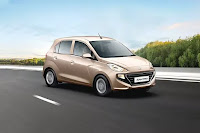In classic marketing textbooks, one of the strategies in managing the maturity stage of the product lifecycle is product modification. Theory suggests that there are two types of modifications - retention modification and conquesting modifications. Retention modifications are those which aims at satiating existing customers while the conquesting modification is aimed at getting new customers.
Odomos has been in the market for decades and the challenge it faces is that stagnation in the market in terms of product penetration. Although mosquitoes are ubiquitous, Odomos is still a small brand in terms of size. This is probably because of lack of awareness and doubts about the safety of applying the cream directly into the skin.
Odomos in recent years has addressed this problem head-on by launching a series of different product forms. Now the brand is available in the original cream form, liquid, gel, patch and now wearables and spray form. This strong marketing thought behind the brand should be appreciated.
In the promotion front, the company has been very active. The target segment in most of the campaign is the children. I wonder why the company is restricting its target ( at least in the ads) to children. It is true that children are active outside the house and risk of them getting diseases is high, but the brand should have focused more on functional/benefit positioning targeting away from the age variable.
The current campaign of Odomos is also well made which is themed in a rap setting but again focusing on children.
The competitor Good Knight is also very active and since the product form differentiation is not insulated from emulation, other brands are also quick to come with their own versions.
My personal take is that Odomos should think of a change in the segmentation strategy focusing on the proposition of a facilitator to active life since mosquitos are a nuisance to an active outdoor life.
Related post













